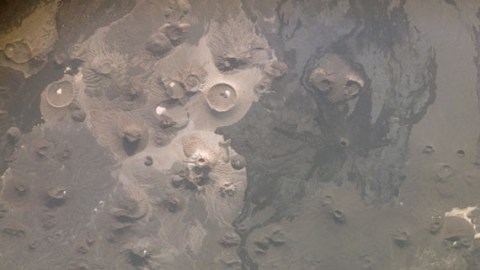2009 Saudi earthquakes linked to magmatic intrusion

On this rainy Monday morning … Let’s hop in the Wayback Machine and head to the year 2009. Back in May of that year, we spent a lot of time worrying about a lot of shaking going on in northwestern Saudi Arabia. The earthquakes were centered under a known volcanic field called Harrat Lunayyir and based on the behavior of the seismicity, reports from on the cracks in the ground, sulfur odors and “whooshing noises” and the location of the activity – in an area with an eruption as recently as ~1000 AD, many of us thought another eruption of the field was coming. Well, nothing came – the seismicity died away and no eruption came.
As it turns out, a new study by John Pallister (USGS) and others in Nature Geosciences supports the idea that the activity at Harrat Lunayyir was an eruption that couldn’t quite make it to the surface. Based on seismic data and deformation data from satellites, they determined that magma rose as close as 2 km from the surface – but rather than erupting, it stalled in the crust forming a sill of likely basaltic lava. The activity did produce a 8-km long fissure through the region, which might have been the vent if the magma made it to the surface, but it didn’t and we are left with this “near miss” (or as Ralph from the Volcanism Blog puts it, “successful intrusion“). Events like this are likely occurring much more often than we have previously realized, but only with constant surveillance allowed by networks of seismometers and satellites are we beginning to notice – similar to the “bulge” on South Sister in Oregon noticed in 2002.
What this study does emphasize is the real volcanic threat that exists in Saudi Arabia. The Harrat Lunayyir volcanic field is only one of a number of recent (geologically) volcanic features in Saudi Arabia. Most of this volcanism is likely related to the rifting in the Red Sea – and thus mostly takes the form of basaltic lava flows and scoria cones – so the overall hazard to life is relatively low. However, this recent seismicity at Harrat Lunayyir shows that we should expect an eruption at some point in the foreseeable future on the Arabian Peninsula.
Top Left: A NASA Image of the Harrat Lunayyir volcanic field in Saudi Arabia. Click on the image to see a larger version.




